Short-haired cat breeds: types, choices and care features
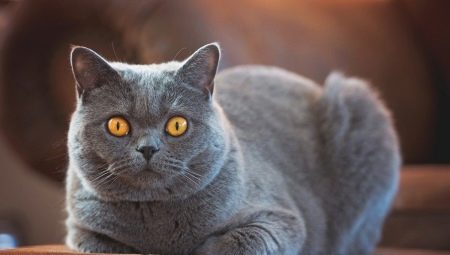
Short-haired cats outnumber their fluffy compatriots in the number of species. They are closer to the wild, in which you will not find feline predators with long fur. Many people prefer to keep short-haired animals because of the easy grooming. In addition, they are beautiful, their abundance allows you to choose a breed for every taste.

Peculiarities
The history of the appearance of short-haired cats takes us back to the depths of time, 60 million years ago, to myacids, the ancestors of all predators on Earth, including felines. Over time, the weight of the animal became smaller, and about nine million years ago, animals appeared, somewhat similar to modern felines.

Ten thousand years ago, the genotype of the Nubian cat (Libyan Bucky) was identified, to which felinologists attribute a relationship with modern species of domestic cats.
Today, cat breeds are classified as short-haired, the pile of which does not exceed 4.5 cm in length. Compared to human hair, wool has a more complex composition. The follicles of an animal contain two types of pile at once: the outer pile, which makes up the fur, and the down (undercoat). The outer (integumentary) can have different lengths, thicknesses and rigidity. The thickest and longest villi are called guides.
A guard hair can emerge from one follicle, surrounded by a whole bunch of fluff. He always lies on top, covering the fluff, thereby saving the animal from frost and precipitation.

The density of the undercoat and guard hair depends on the climatic conditions in which the feline lives. In northern animals, the fur is much thicker and warmer, with a lot of fluff. In the south, cats live with short and tight hair. Breeding animals have brought confusion into the natural pattern.Today, there are species that do not have an undercoat (Burmese) or even wool (Don Sphynx) at all.
Rexes, in spite of the straight guard coat created by nature, are endowed with a wavy mutation. And the type of fur "brush" (it happens in some sphinxes) looks like a rigid twisted wire.


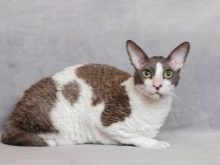
Varieties
It is difficult to say how many short-haired cat breeds live on the planet. Each felinological organization has its own views and standards on this matter. The WCF Association considers 44 species of 70 breeds to be shorthaired, including Sphynxes.

According to the type of wool, pedigree short-haired animals can be divided into three types.
- Smooth-haired. They have a short, close-fitting coat. This type of cat needs least of all grooming, it is enough to brush once a week. For a beautiful shine, you can use a special conditioner.

- Curly. These include rex. The wool is complex, such pets should be bathed as a last resort, since it is impossible to comb the wool after water procedures, it gets too confused. As a care, it is better to wipe them with a suede cloth.

- Plush. An example of this type of wool is the following breeds: British Shorthair, Scottish Fold, Exotic. They have a short, thick, very pleasant to the touch, coat. It is worth combing them once or twice a week using a silicone glove.

Considering breeds on a territorial basis, they can be divided into three main groups: European, Eastern and American.
- European... These include such breeds as British, Manx, Blue Russian, Scottish, European Shorthair. Most often, these are large, stocky animals, with wide cheekbones and a heavy gait.


- Eastern. In contrast to European cats, oriental cats are light, graceful, elegant. They have a lean body, long legs and neck, a triangular head devoid of cheeks, huge ears and a long thin tail. This group includes Siamese and Oriental cats, as well as African beauties - the Abyssinian cat and the Egyptian Mau.


- American. These animals are considered the descendants of European cats brought to the American continents after their discovery. There are a lot of such breeds, the most popular are Exot, Bengal, Bombay.
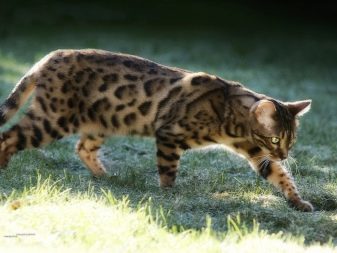

The variety of cat species makes it difficult to choose a short-haired pet. To make it easier, we present the most popular breeds of these animals.
Abyssinian cat
Named after the ancient country of Abyssinia (now Ethiopia). The ancestors of these animals once lived on the territory of ancient Egypt and were considered sacred. Abyssinians are graceful, muscular cats with a beautiful curve of the neck. They are very smart and temperamental pets, they love people, but they also value their independence.

Get along well with other animals.
American shorthair
Powerful animals with rounded legs. Their ancestors arrived in America with the first European settlers, but as a breed this type of cat developed relatively recently - in the middle of the last century. American cats are good-natured, loyal, although independent. They get along well with children and other animals.

They have a lightning-fast reaction, which makes them the best hunters among domestic cats.
Bengal cat
The cat was bred for those who love wild animals. In the sixties of the last century, the Asiatic leopard was brought to America. His offspring, produced from a domestic cat, became the basis of the breed. The breeders have worked for many years, but they managed to create a kind and affectionate animal with the appearance of a wild leopard.

Today it is one of the most expensive and rare breeds.
British Shorthair
The best British yard cats were taken as the basis for creating a teddy cat, so nature worked more than breeders in the formation of this breed. It turned out to be a good-natured big man with a phlegmatic character, but, like a true Englishman, imposing, mannered and with a sense of tact.

Burmese cat
In the first half of the last century, several cats were taken to the United States from Burma. They were crossed with the Siamese, and the result was an amazingly beautiful chocolate-brown cat with a round muzzle and a pillow-like nose. Today Burmese have other types of color as well.

These animals are good-natured, affectionate and dog-like devoted to man; from separation from him, they can yearn and die.
Bombay cat
By creating this breed, breeders tried to obtain an Indian mini-panther with an affectionate disposition of a domestic cat. The selection was attended by Burmese and black American short-haired animals. It turned out to be a beautiful black creature with shiny hair. The character inherited from a devoted, contact and loving Burmese cat.

Devon rex
In 1960, a kitten with wavy hair was discovered in a litter of a domestic cat in England, its offspring gave rise to a breed of curly kittens. Representatives of the breed have a plastic body, a triangular muzzle and huge protruding ears. Cats follow their owner everywhere, love to be in the center of events, never get bored. The fountain of energy and affection for people make communication with them unforgettable.

European shorthair
This trend of cats was created by nature, breeders did little to interfere in the formation of the species. Having gone far from the wild world, the animal retained good immunity and hunting skills. In Russia, the breed did not become popular, as it looked like our street cats.

Animals are kind, harmless, communicative, but unobtrusive, they can entertain themselves.
Egyptian mau
The cat with a luxurious spotted smoky color, similar to the ancient Egyptian images, belongs to the ancient breeds. She is distrustful, withdrawn, but devoted to her family. They are incredibly energetic animals, good hunters. They dislike strangers and jealously guard their toys. You can bathe them, if this is done from childhood, the cat takes water procedures with pleasure.

Cornish Rex
A smooth-haired cat in England gave birth to a curly-haired kitten, which became the progenitor of the breed. Animals are intelligent, affectionate to their owners, active, love to play with small children. Cats do not mark territory, unlike other breeds.
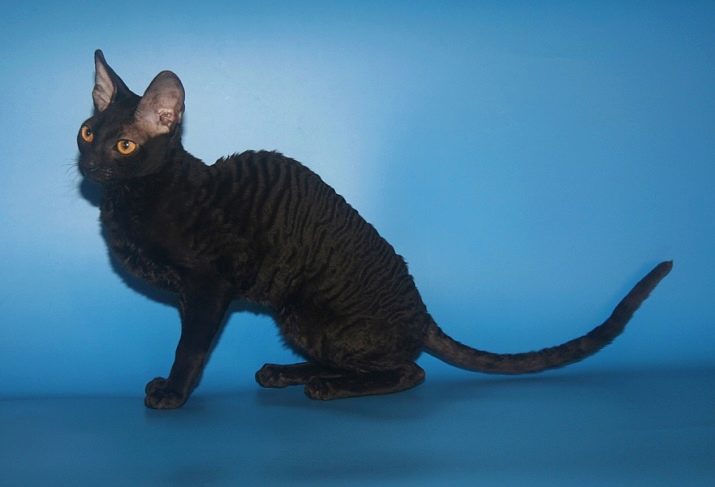
Cats are very responsible mothers, they raise their kittens for a long time and tenderly.
Munchkin
A very unusual cat breed, with tiny feet on a standard body. This gives them a similarity to dachshunds. In 1983 Sandra Hochenedel (USA) found a short-legged pregnant cat. Most of the kittens born have inherited the gene for short legs from their mother. Munchkins came to Russia in 2001 and have established themselves as sociable, friendly, playful pets.

Mainx cat
The animal has no tail. But some representatives of this breed have a small "stump", occasionally there are individuals with a full-fledged tail. The cats were named Manx after the Isle of Man off the coast of Great Britain, where their breed was formed. Pets can be kept for families with small children or other animals.
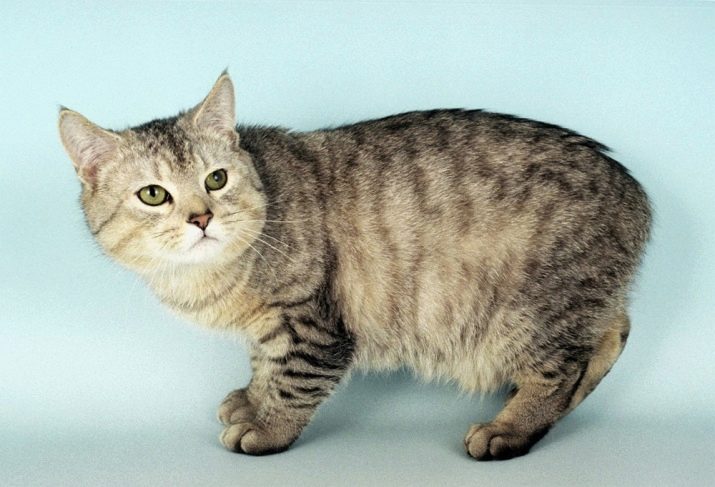
They are sociable, playful and curious.
Oriental
At the end of the 19th century, they tried to classify the oriental monochromatic beauty as a variety of Siamese cats, but the color did not coincide too much. American breeders in the middle of the last century registered the Oriental as an independent breed. The friendly, talkative and very affectionate cat enjoys wide popularity in Europe and America.

Ocicat
Cats are so called because of the external resemblance to the wild predator ocelot: they have the same expressive spotted pattern on the skin. Despite the resemblance to a wild animal, the pet has a gentle character, a cheerful, playful disposition, she is sociable and devoted, with her habits more like a dog.

Pixiebob
The cat looks like a lynx: the same spotted, with tassels on the ears and a piece of tail instead of a whole. Pixiebobs were bred in America in the 80s of the last century. These are gullible gentle animals who consider family to be their flock. They are smart, understand human speech and always come to the call.

Russian blue
These cats came to Europe from the Arkhangelsk province. Many people liked the bluish delicate fur of the animal with a silvery sheen. The character of the cat is tactful, obedient and gentle, but she does not like tenderness, does not allow herself to be stroked, and is wary of strangers.

Siamese cat
In ancient times, on the territory of Siam (now Thailand), cats were kept at the court of the rulers. They were companions of princes and princesses who were not allowed to play with other children. A couple of pets were presented to the English royal family in the 19th century, they became the progenitors of all European cats.

They are very intelligent animals with an interesting multifaceted character.
Singapore cat
Refers to the smallest cats. They were brought to Europe in the 70s of the last century from Singapore. The breed originated naturally. Today it is rare and few in number. Animals are loving, but unobtrusive, with great energy potential, they are always in motion, get along well with children and other animals.

Snow shu
The breed is obtained by crossing the Siamese cats with the American shorthair species. They borrowed color from the Siamese, and from the American breed - a large physique. The cat is smart, amenable to training, and fulfills commands well.

She belongs to affectionate, affectionate breeds, does not tolerate loneliness, constantly follows a person.
Thai cat
Due to the color similar to the Siamese cat, these breeds are often confused. But Thais do not possess such sophistication and grace as the Siamese. They are intelligent animals with a canine mind and habits.

They are very talkative, ready to purr and meow all day, love to play and perform various tricks.
Toyger
This cat looks like a miniature tiger, but her character is completely tame. The breed is young, it was bred at the end of the last century. It is difficult to find a more good-natured creature, the cat gets along with everyone, from children to a small bird, if it lives in the owner's family.

Ukrainian levkoy
A very young breed, bred in our century. It is a hairless fold-eared cat, with a graceful body, long and flexible limbs. This is a loyal and devoted friend, if someone is sick, Levkoy will not leave the household for a minute.

Cats love to run, but they can walk on a leash.
Chartreuse
The breed was bred by the French, they consider it their trademark. They are very large animals with beautiful amber eyes and soft blue tint hair. Cats are balanced, adequate, but prefer loneliness to noisy companies. In the family, the chartreuse chooses his own master and obeys only him.

Scottish lop-eared
Small ears, pressed against a round muzzle, look very touching. Not all kittens have ears drooping with age; those who do not have this are called Scottish Straight. Pets are the most calm and phlegmatic cats in the world. They get along with everyone, but do not like to sit on their hands and prefer their own space.

Exotic shorthair (exotic)
In the sixties of the last century in America, they crossed a Persian and an American short-haired cat - it turned out to be a cute plush animal with a snub-nosed nose. Due to their cartoonish appearance, Exotics have become a favorite breed all over the world.

They are kind, mobile, patient, cannot stand loneliness, but they do not impose themselves if the owner is busy.
How to choose?
The choice of animals depends on the preferences of their owners. In addition to short hair, there are many more criteria by which cats are chosen: some like affectionate ones, while others prefer independent ones, someone needs a calm one, and someone needs a playful one. To make it easier to choose, let's sort out cat breeds according to different characteristics.
Sociable
There are cat breeds that not only impose their society on their owners, but also love to "talk".They will purr and meow for any reason, struggling to communicate something in their own language. Talkative breeds include Burmese, Siamese, Thai, Oriental cats, as well as Don and Canadian Sphynxes. They are very affectionate, loyal and sociable animals. People who spend all their time at work should not choose these breeds.

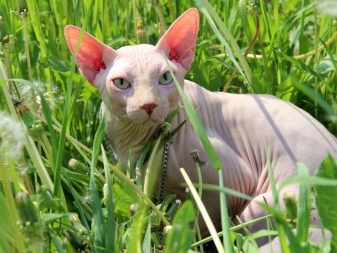
Sociable animals are suitable for lonely people, retirees, housewives or middle-aged and older children, as these cats are intellectuals and love to play.
Silent
Some people prefer silence, especially after a noisy day at work. They will be tired of the talkative sphinx, literally pursuing the owner everywhere. In this case, you should choose silent breeds. These include: Cornish Rex, American Shorthair, Exotic.


Active
If there are older children in the house who need playmates, moveable, playful animals should be chosen. You can play hide and seek with them, run a race. Or toss a ball and ask to bring it. They can be trained and taught in many tricks. Those who are touched by the rapid temperament of a pet should choose the following breeds: Ocicat, Bengal, Siamese or Abyssinian cat, Egyptian Mau.

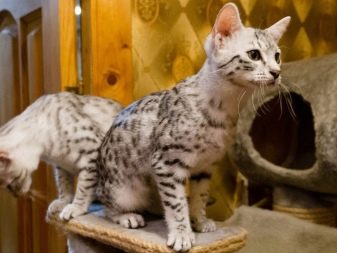
Sloth cat
Cats of these breeds will suit owners with a good repair, because they will not rush around the house and destroy everything around. They are ideal for people with a weak nervous system, as they will not annoy them with their obsession and activity. A well-eaten and sleeping cat can always be woken up and stroked if an antidepressant is needed. The lazybones include: exotic, british and russian blue cat.

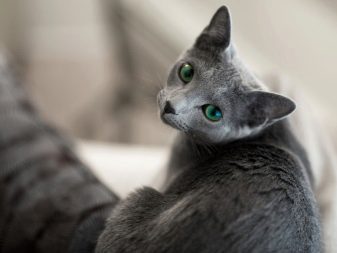
Affectionate
There are cat breeds that literally beg for affection from their owners. They rub against their legs, jump onto their hands, climb into the face to "kiss", hug their necks with their paws. Such "stickies" are suitable for people with great unspent potential of love and tenderness - communicating with each other, everyone will get their portion of pleasure. Affectionate character endowed with: Don Sphynxes, Manks, Burmese.


Smart
Grown up children and young people most often choose intelligent breeds of cats, easy to train, with which you can play, communicate. It's always interesting and fun with them. Smart cats include: Siamese, Oriental, American Bobtail, Munchkin, Burmese.
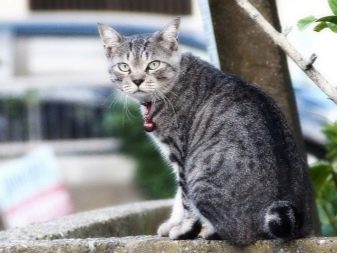

Such animals are suitable for those who cannot get a dog, but want to communicate with a smart animal.
For those who are rarely at home
Some cat lovers, due to their busyness, are out of the house all day, but they cannot completely refuse to communicate with cats. Such people should choose calm and at the same time independent animals who will not suffer from lack of attention, but will always be able to entertain themselves. Suitable for workaholics: Scottish, British, blue Russian cat, Egyptian Mau and Munchkins.


Good-natured breeds for children
For children, especially young children, you should choose an animal with a peaceful character, which will not "give back" even if the baby pulls his tail. They should be patient cats who enjoy interacting with children. In this case, it is better to pay attention to the following breeds: manx, exotic.


Obsessive, loyal
Such animals are suitable for lonely people who do not have enough attention and communication. Animals of this type literally live with the problems of the owner: they rest together, do the cleaning, do household chores and sleep. Cats do not leave people for a minute. Velcro includes Burmese, Thai, Bengal cats, Devon Rex, Japanese bobtail.


Hunters
These cat breeds are suitable for people living in private houses, as they are endowed with a strong hunting instinct, they are excellent at catching mice and are independent enough to visit the yard, the street and return home. For private sector owners: turkish van, blue russian, manx, american shorthair.

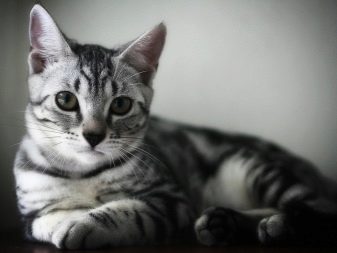
If there are already pets in the house
The house has dogs, birds, guinea pigs, turtles, but no cat. Fans of home "zoos" are worried about what kind of cat can be brought into the house without a "scandal" with other animals. In this case, you should choose good-natured, sociable, livable representatives of the breeds. These include: Japanese and American Bobtail, Thai and Bombay cat, Peterbald.


Unusual breeds
For those who want to express themselves, to enjoy the delight of guests about an unusual pet, you need to pay attention to the breeds: peterbald, devon rex, cornish rex, munchkin.


Cats that resemble wild breeds
These cats are suitable for wild animal lovers who cannot afford to bring a panther or leopard into their home. Certain breeds will remind them of the wild. In this case, you should take a closer look at Ocicat, Savannah, Bengal and Bombay breed.


When choosing a pet, you need to take into account not only the wishes of the owner, but also the environment in which the animal will live, whether the family is suitable for a particular breed.
Nuances of care
If a cat with long hair settles in a family, there will be a lot of care for both her and the apartment. In this regard, it is easier with short-haired animals, but they shed no less than their counterparts - just the hairs are shorter. In the wild, animals molt twice: preparing for winter and for summer. In domestic cats, due to the comfortable constant temperature, the "deceived" body fails, there is a sluggish molt throughout the year.
Disease, stress, old age, poor nutrition can affect the active dumping of animal hair. The appearance of a large amount of fluff in a house with a young cat should be an alarm signal for the owner. You should check the physical or psychological health of your pet.
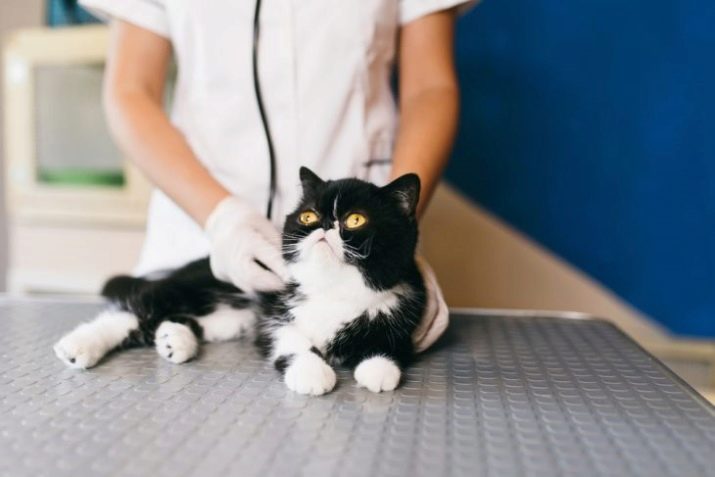
The short-haired cat will also have to be combed, only less often, about once a week. There are a number of reasons why you should do this.
- Fur licked by a cat can clump in the intestines, interfering with the digestive process. If you do not help to get rid of dying hair in a timely manner, the animal will have to give a gel to resorb it.
- The brush perfectly massages the skin, improving their blood supply, and hence the quality of the coat.
- Many cats love the brushing procedure, at this moment a special emotional contact arises between the owner and the animal.

You can remove hair from the animal with the help of special combs, brushes or a silicone glove with teeth, purchased at the pet store. To do this, you should carefully brush the brush two or three times from the nape to the tail of the pet, and then do the same movements in the opposite direction. Having finished working with the back, you need to gently comb the sides and stomach.

Despite the cat's indignation, it is still necessary to walk with a rubber brush along the animal's tail.
A short-haired cat should be washed as a last resort. But it is periodically necessary to take care of the ears, eyes and paw pads. This is done using cotton swabs, tampons dipped in boiled water, a weak solution of manganese or a decoction of herbs.

The owner is also responsible for the health of the animal. It is necessary to periodically show the cat to the veterinarian for preventive purposes, monitor the vaccination card. Once every three months, give your pet pills for worms, even if he is not on the street.

Many cats are unpretentious in food, they eat everything that they are given. But the correct balanced diet will help keep the animal healthy for years to come.

Short-haired cats are as beautiful, intelligent and talented as all cats in the world, only with a little less worries with their fur.

For the features of short-haired cat breeds, see the next video.
































